Meet Raine Michaels the Inspiring Sports Illustrated Swimsuit Model With a Rockstar Family1/31/2019
Meet Raine Michaels, the Inspiring Sports Illustrated Swimsuit Model With a Rockstar Family
http://bit.ly/2S4dHll 
When the top six models for the Sports Illustrated Swimsuit Issue contest were announced on Wednesday, one name was immediately recognizable: Raine Michaels. The 18-year-old model, who just won a coveted spot in the famous swimsuit edition for 2019, comes from rock royalty. Her father is musician Bret Michaels, best known as the lead singer of the metal band Poison, and while she's not following in his rockstar footsteps, she's definitely making headlines of her own. In an Instagram post, Michaels shared her news, along with a comment on how much this means to her and how long she's dreamed of this particular achievement. "It has been my dream to be a Sports Illustrated Swimsuit model since I was 13 years old and it is now coming true." This isn't her first brush with the brand, though. In July 2018, Michaels made her modeling debut walking in the SI Swimsuit fashion show. Michaels might also inspire fans by modeling what a life with a chronic health condition can look like. In an interview with Parents in 2010, her father opened up about his own struggles with type 1 diabetes, and the fact that tests had revealed that young Raine had prediabetes. "When she was diagnosed with borderline diabetes at first she was really upset," he shared. "I've had [diabetes] my whole life, so all of our resources are self contained . . . We just talked to doctors who are friends of ours about it and a dietician [sic]." Michaels hasn't shared extensively about her own health, but she's living her best life and showing the world that a diagnosis of any kind doesn't have to be devastating. Her proud dad also shared the happy news on Instagram, writing, "So incredibly proud of @rainee_m! She works hard while being the kind & humble soul she's always been. I know she's beyond excited to work with @si_swimsuit and is grateful to be a top 6 finalist! Congratulations to her and all the other finalists who worked so hard to get to this point!" The pair don't often talk about each other publicly, as Michaels's parents tried to keep her and her younger sister, Jorja Bleu, out of the public eye. Still, Michaels told Maxim that her father has always been supportive, even when he had to be away. "My dad is a free-spirited guy who taught us to always believe in ourselves. He loves playing music and touring so it was awesome being able to go up on stage with him and sing," she said. "It's also been bittersweet because he toured so much that I didn't get to see him as much as I would like to. But he goes out of his way to come see me and we still always have the best time." Something tells us there are more good times ahead for Michaels and the entire family. While you wait for the special issue to drop, scroll through to check out some of her gorgeous Instagram snaps. Health via POPSUGAR Fitness http://bit.ly/2mWxwLI January 31, 2019 at 01:19PM
0 Comments
Medical Scribes Could Help Improve ER Care
https://wb.md/2BbZ2KG  THURSDAY, Jan. 31, 2019 (HealthDay News) -- Using medical scribes in emergency departments is a smart way to increase the number of patients seen by doctors and reduce the time patients spend there, a new study indicates. Medical scribes do administrative tasks, such as documenting visits while a doctor evaluates the patient, printing out paperwork and arranging tests and appointments. While most doctors find scribes helpful, there has been little research into the benefits of using them in emergency rooms, and no evaluation of how their use might affect patient safety. In this study, researchers examined the productivity of doctors, working with and without scribes, in five Australian emergency departments (ED). The scribes were medical or pre-med students who were trained before the study and randomly assigned to doctors' routine shifts. Researchers ended up with data from 589 scribe-assisted shifts (5,098 patients) and 3,296 unassisted shifts (23,838 patients). Scribes increased the number of patients per hour for each doctor by 15.9 percent overall and 25.6 percent for primary consultations. How long patients waited to see a doctor did not change, but they spent 19 minutes less in the ED when a scribe was present. The impact was greatest when scribes were with senior doctors at triage -- where cases are assessed and prioritized, tests are ordered and some treatments begun, before patients see a doctor in the main ED. No significant safety issues occurred when scribes were used. One in 300 scribed consultations involved a patient safety incident. Most involved incorrect patient identification and ordering of tests. In half those incidents, the scribe helped prevent a medical error, according to the study published Jan. 30 in the BMJ. Researchers concluded that using scribes could save a hospital $26.15 per scribed hour if the hospital covered the cost of training, and $31.15 per scribed hour if the scribe paid for the training. Dr. Katie Walker, director of emergency medicine research at Cabrini Hospital in Melbourne, Australia, led the study. "Given the strong preference of physicians for working with a scribe, no effect on the patient experience, minimal risk, and the productivity and throughput gains outlined, emergency department and hospital administrators should strongly consider the potential local utility of scribes in their workforce and financial planning," Walker and colleagues concluded in a journal news release. Health via WebMD Health https://www.webmd.com/ January 31, 2019 at 12:50PM
What Works to Help Teens Quit Vaping?
https://wb.md/2ScVjWQ  "A few years ago, it would've been incredible to me that we would be here today discussing the potential for drug therapy to help addicted young people quit," FDA commissioner Dr. Scott Gottlieb told CNN after the hearing. E-cigarettes contain large amounts of nicotine, and it can be hard for kids to keep track of how much they've vaped, said Robin Koval, CEO and president of Truth Initiative. There's concern that kids hooked on vaping will eventually start smoking. "The evidence shows kids who would otherwise not have smoked who start vaping are four times as likely to go on and use combustible tobacco," Koval said. Nicotine replacement therapy is a cornerstone for adults who want to quit smoking, but the gum and patches are not readily available to teenagers, she noted. "For adults, lozenges and patches are available over the counter, but not for those who are under 18," Koval said. Nicotine replacement therapy may not work for young vapers A doctor can prescribe nicotine replacement therapy off-label for teens hooked on nicotine, Richter said, "but there isn't strong evidence they're particularly effective for kids. It's possible the level of nicotine in the nicotine replacement [products] are not high enough for people who are vaping." Some adults also use antidepressants to help them quit smoking, but these medications are worrisome for teenagers, she added. "There are concerns about giving antidepressants to kids," Richter said. "Some studies have shown it can increase suicidal thoughts in kids." Smoking cessation programs might help, Richter suggested, but these also have not been tested when it comes to quitting vaping. Koval said, on top of that, it's not clear whether kids addicted to e-cigarettes would see smoking cessation programs as a legitimate option. "For young people, quitting vaping is not the same as quitting cigarettes," Koval said. "A lot of young people will say to us, well, I'm not a smoker. I would never smoke cigarettes. They don't want to be part of a quit program designed for smokers." It's also easier for kids to maintain an e-cigarette addiction compared to a smoking addiction, Koval said. Health via WebMD Health https://www.webmd.com/ January 31, 2019 at 12:07PM
Study: Breakfast Not Key to Weight Loss After All
https://wb.md/2GewCTi By Serena Gordon HealthDay Reporter WEDNESDAY, Jan. 30, 2019 (HealthDay News) -- For years, you've probably heard that breakfast is the most important meal of the day if you're trying to maintain a healthy weight. But new research suggests that's not true. Eating a hearty breakfast doesn't help people eat less later in the day, and those who have breakfast end up eating more calories each day, the review found. "We should not change diets to include breakfast eating in order to lose weight. Do what works best for you," said review senior author Flavia Cicuttini. She is head of the musculoskeletal unit at Monash University in Melbourne, Australia. "The evidence is that eating breakfast does tend to add to the overall calorie intake of the person and to overall weight gain," Cicuttini said. But she also noted that there is no one-size-fits-all solution to eating breakfast. Some people like breakfast and some don't. The results of the study were published online Jan. 30 in the BMJ. Tim Spector, author of an accompanying journal editorial, agreed that whether or not to eat breakfast should be based on personal preferences. Spector, himself a breakfast eater, said that "everyone has a unique metabolism, set of genes and very different gut microbes and will react to different foods. Don't take standard guidelines as gospel. Experiment yourself [to learn] what is best for your body." Previous studies have suggested that eating breakfast would lead to a healthier weight. But both Cicuttini and Spector pointed out that most of the previous research was observational. Spector noted that some of that research was "biased and flawed." For the new study, the investigators looked at 13 randomized controlled trials that took place over the past three decades. The studies were mainly from the United States or the United Kingdom. The participants in the trials were of various weights and some were regular breakfast eaters, while others were not. The studies monitored people for as little as a day or as long as 16 weeks. People who ate breakfast ended up eating about 260 calories more a day, the review found. People who skipped breakfast were about one pound lighter than those who ate breakfast. ContinuedThe review also didn't find any significant differences in metabolic rates between breakfast skippers and breakfast eaters. Although the authors pointed out that there were some inconsistencies and varying quality in the studies included in the review, they said it appears that eating breakfast isn't a helpful strategy for losing weight. According to Cicuttini, "The key message is that if a person likes to eat breakfast, that is fine. However, there is no evidence that we should be encouraging people to change their eating pattern to include breakfast in order to prevent weight gain or obesity." Registered dietician Dana White, from Quinnipiac University in Hamden, Conn., said, "Maybe for those people who are anti-breakfast, this review gives reassurance that maybe skipping breakfast won't sabotage weight loss. But if you're hungry in the morning, I wouldn't tell you to ignore that either." White said for people who exercise in the morning, it might be harder to skip breakfast. But as with other times of the day, she suggested, "eat when you're hungry and have moderate portions of food." And while skipping breakfast may not be the dietary evil it has often been portrayed to be, forgoing that first meal of the morning isn't likely to be a diet cure-all either, White noted. Health via WebMD Health https://www.webmd.com/ January 31, 2019 at 12:00PM
This Chart Can Help You Find Your Target Heart Rate and Burn More Fat With Each Workout
http://bit.ly/2WzOspU 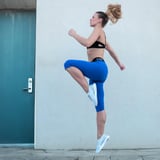
Whatever your goals for your workouts - whether to lose weight, build endurance, or sculpt lean muscle - tracking your heart rate can help ensure that they're as effective as possible. "Heart rate is a good indicator of two things: your overall cardiovascular fitness and how hard you're working," Corey Phelps, an NASM-certified personal trainer and creator of Cultivate365, an online fitness and mental health platform for women, told POPSUGAR. To use it to your advantage, you first have to calculate your maximum heart rate - that's the maximum number of times your heart should beat per minute during exercise - by subtracting your age from 220. Then you'll take a percentage of that number, which varies based on the workout, and that will become your target heart rate zone. "One of these zones is the fat-burning zone, which is achieved at a lower heart rate with the goal being to stay there for a longer duration of time, such as 30 to 60 minutes," Corey said. This is known as LISS cardio (or low-intensity steady state), which can include swimming, biking, or brisk walking. To get into the fat-burning zone, you'll need to work out at 60 to 70 percent of your max heart rate. "When you're in this zone, you'll start to sweat, but you should still be able to carry on a conversation without any difficulty," she said. Next is the aerobic zone, which is achieved at 70 to 80 percent of your max heart rate - this one really begins to challenge your cardiovascular fitness, making it ideal for a moderately paced run or other exercises intended to improve your strength and endurance, Corey explained. If you prefer a quicker, more intense workout, such as high-intensity interval training, Stan Dutton, an NASM-certified trainer and coach for the personal training platform Ladder, recommends getting your heart rate up to 80 to 90 percent of your max for short bursts, then recovering until it drops below 60 percent again. "Interval training works by increasing something called the afterburn effect, or excess postexercise oxygen consumption (EPOC)," Stan said. In layman's terms, EPOC allows your body to burn calories for hours after your session, in spite of you doing a shorter workout. "However, this is a more advanced training technique that should only be used after creating a solid foundation with low-intensity, steady-state cardio," he cautioned. Finally, Corey emphasized that you should be careful not to neglect strength training, since muscle helps your body burn more calories. "If fat loss is your goal, lifting weights should be your first priority," she said. "Target heart rate training and varied intervals support fat loss, but they must be paired with weight lifting, as well as goal-specific nutritional habits." Once you've created a balanced workout plan, use the chart below to help determine your target heart rate for each specific workout.
Health via POPSUGAR Fitness http://bit.ly/2mWxwLI January 31, 2019 at 10:58AM
FDA Fast-Tracks OTC Naloxone for Opioid Overdose
https://wb.md/2Uxuryq 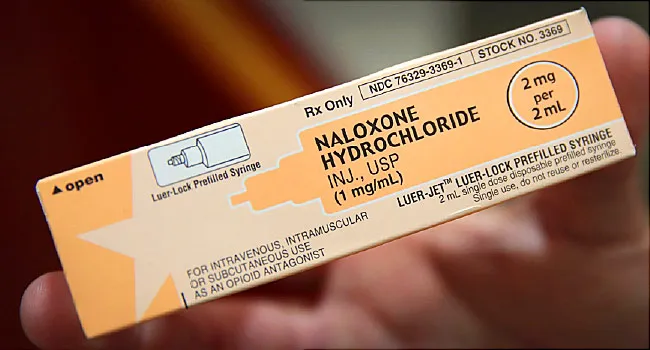 Jan. 31, 2019 -- The FDA has announced "unprecedented" steps to help companies develop over-the-counter (OTC) naloxone to cut opioid overdose deaths. "With the number of overdose deaths involving prescription and illicit opioids more than doubling over the last 7 years to nearly 48,000 in 2017, it's critical that we continue to address this tragedy from all fronts," FDA Commissioner Scott Gottlieb, MD, said in a statement. This includes new ways to make naloxone easier to get. The drug typically can reverse an overdose within minutes when given quickly, said Gottlieb. To encourage drug companies to bring OTC naloxone to the market soon, the FDA came up with two model "drug facts" labels -- one for use with naloxone nasal spray and the other for use with a naloxone auto-injector -- and made sure the "consumer-friendly" instructions are simple to follow. Those are two steps that companies seeking approval of an OTC drug usually have to do themselves. Some companies have said those requirements get in the way of developing OTC naloxone products. "This is the first time the FDA has proactively developed and tested a DFL [drug facts label] for a drug to support development of an OTC product," said Gottlieb. "We proactively designed, tested, and validated the key labeling requirements necessary to approve an OTC version of naloxone and make it available to patients. One of the key components for OTC availability is now in place," he noted. "These efforts should jump-start the development of OTC naloxone products to promote wider access to this medicine," said Gottlieb. "We're taking many steps to improve availability of naloxone products, and we're committed to working with other federal, state, and local officials; health care providers; patients; and communities across the country to combat the staggering human and economic toll created by opioid abuse and addiction," he said. Health via WebMD Health https://www.webmd.com/ January 31, 2019 at 10:57AM
Sure, It's Cold Out, but These Experts Say Running in Winter Is Good
http://bit.ly/2Rr4IWd 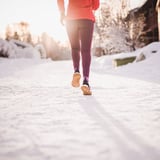
Running in the Winter can be, for lack of a better word, cold. And, well, intimidating. Let's get one thing straight first: you shouldn't be pounding pavement outside if the wind chill is below negative 18 degrees Fahrenheit, or within reason. Think about it: a storm advisory is a good indication that you should stay indoors. But, when it's just a regular Winter day that makes you want to book your next tropical vacation, lacing up your running shoes isn't the worst idea. In fact, it's good for training, according to some experts we spoke to. Roberto Mandje, head of training at New York Road Runners and former Olympic runner, told POPSUGAR, "One thing that I tell a lot of the runners I work with, whether they're training for our TCS New York City Marathon or even some of our virtual races, is you want to head out in the conditions regardless of what they are, obviously within reason and keeping safety a priority, because it's going to improve your training." Mandje explained, "It's going to give you the physiological boost of training in those conditions, but also the psychological boost of saying, 'I'm tough, I made it out in these conditions,' and that's going to translate to later on in the year when you start to do races in ideal conditions" because you've trained in worse before. If you're competing in a Winter race and the weather is far from ideal, "Well, you're acclimatized to it," Mandje said. And, he added, someone who only ran indoors would be at risk of becoming "shell shocked." Alexis Colvin, MD, an orthopedic surgeon from Mount Sinai specializing in sports medicine, told POPSUGAR she seconds that claim. "I think with any training you don't always want to do the same thing over and over again, and in the Winter it's easy to get into this rut of going on the treadmill or just going to the gym, which may be fine depending on what your goals are. But, if you actually want to improve, you need to challenge yourself. One way to do that is to vary the terrain as well as the temperature and the environmental conditions." In addition, exposing yourself to cold during workouts can help you burn more energy, states The Journal of Clinical Investigation, and therefore more calories. Before we leave you to your training, it's important to note that if you have heart problems or exercise-induced asthma, which can be triggered by cold temperatures, you should take extra precautions during the Winter. Anyone running outdoors this time of year needs to replenish with fluids and stay mindful of preventative measures like layering up and listening to your body, Dr. Colvin said. Find more tips for Winter running here. Be cautious, but don't let temperatures fit for Queen Elsa stop you from getting in that mileage. Health via POPSUGAR Fitness http://bit.ly/2mWxwLI January 31, 2019 at 10:20AM
6 Habits Experts Swear by For More Restful Nights and Happier Mornings
http://bit.ly/2MHUaRV 
If you feel like you're moving from one long, groggy day to the next, it might be time to re-evaluate your sleep hygiene, a term coined by experts to describe good habits that can help you fall asleep and stay asleep. If that just sounds like more work, consider the following laundry list of consequences for too little shut-eye. "Poor sleep is hell on our brains, leading to inadequate waste removal (which can contribute to Alzheimer's), poor cognitive performance, inability to appropriately read others' emotions, even increased risk-taking behavior," sleep specialist W. Christopher Winter, MD, author of The Sleep Solution: Why Your Sleep Is Broken and How to Fix It, told POPSUGAR. "Poor sleep makes us want to eat more and eat bad things," he continued. "It also affects digestion, cardiac functioning, hypertension risk, diabetes risk, the immune system, and more." Convincing enough? Keep reading for six tips that can help you transform your sleep habits and finally get the rest you deserve. Health via POPSUGAR Fitness http://bit.ly/2mWxwLI January 31, 2019 at 07:19AM
The Mindful Fitness Challenge
http://bit.ly/2Gb6fOh By Leo BabautaAs New Year’s resolutions fade and we realize we need to try something else to get fit … I invite you to try a combination of two things that I’ve found to work really well:
So for February, I’m issuing the Mindful Fitness Challenge, and it will get you in better shape than you’ve been in for awhile! OK, so how does this challenge work? It’s simple:
That’s it. Practice each mini-challenge wholeheartedly, not rushing through it. Bring mindfulness to each activity. I’ve issued 13 mini-challenges, including ones like:
I spell out more details for each mini-challenge in the actual challenge that I’m running in my Sea Change Program, with more than 1,000 other members! If you join my Sea Change Program (with a 7-day free trial), here’s what you’ll get:
I can guarantee you that if you actually use this challenge, attend the webinar, and become a regular in the challenge community on Slack … your life will be changed. Join the challenge by signing up for Sea Change today.
Health via zen habits http://zenhabits.net January 31, 2019 at 07:04AM According to a Dietitian Food Isn't the Only Factor That Causes Belly Fat - It's Also This1/31/2019
According to a Dietitian, Food Isn't the Only Factor That Causes Belly Fat - It's Also This
http://bit.ly/2B89d2v 
Determining the cause of your belly fat isn't as simple as doing a quick Google search. Your search results may help you pinpoint possible contributing factors, but at the end of the day, it will vary from person to person. What you eat and your activity level can affect your body composition, and to figure out if there are foods correlated with higher levels of belly fat, POPSUGAR spoke to Nicole Lund, MS, RDN, a clinical nutritionist at NYU Langone's Sports Performance Center. "It's a hard answer because there's a lot of things at play," Nicole told POPSUGAR. "There are a lot of hormonal implications with belly fat. There's the genetic component," she said. Nicole also explained that as women age, "they tend to carry more weight in their belly, and that's just the shift in the estrogen and testosterone." Another factor that contributes to belly fat is your body type. This is because everyone stores fat in different regions of the body. As far as food is involved, Nicole explained that another culprit of belly fat is food sensitivities. "That's why I think everyone's a little bit different. It's hard for us to say, 'Oh yeah, dairy or bananas' . . . because I think everyone is sensitive to different foods.'" Nicole explained that people have their own individual responses to certain foods and how their bodies digest them, which is why some people choose to cut out particular foods. There isn't a universal list of foods that cause belly fat, but Nicole said dairy, sugar, and different fruits with high amounts of fructose can cause bloating, gas, and GI distress, which often appear as belly fat. By removing offenders that trigger a bad response from your body, Nicole said you can expect to have a flatter stomach. Stress, hormones, a poor diet, and low activity levels are contributing factors to belly fat, and body fat in general, which it's why it's important to maintain a healthy lifestyle. If you eat clean and exercise and still aren't able to lose body fat, we recommend speaking to your physician or an endocrinologist. Health via POPSUGAR Fitness http://bit.ly/2mWxwLI January 31, 2019 at 06:40AM |
Archives
October 2020
Categories |


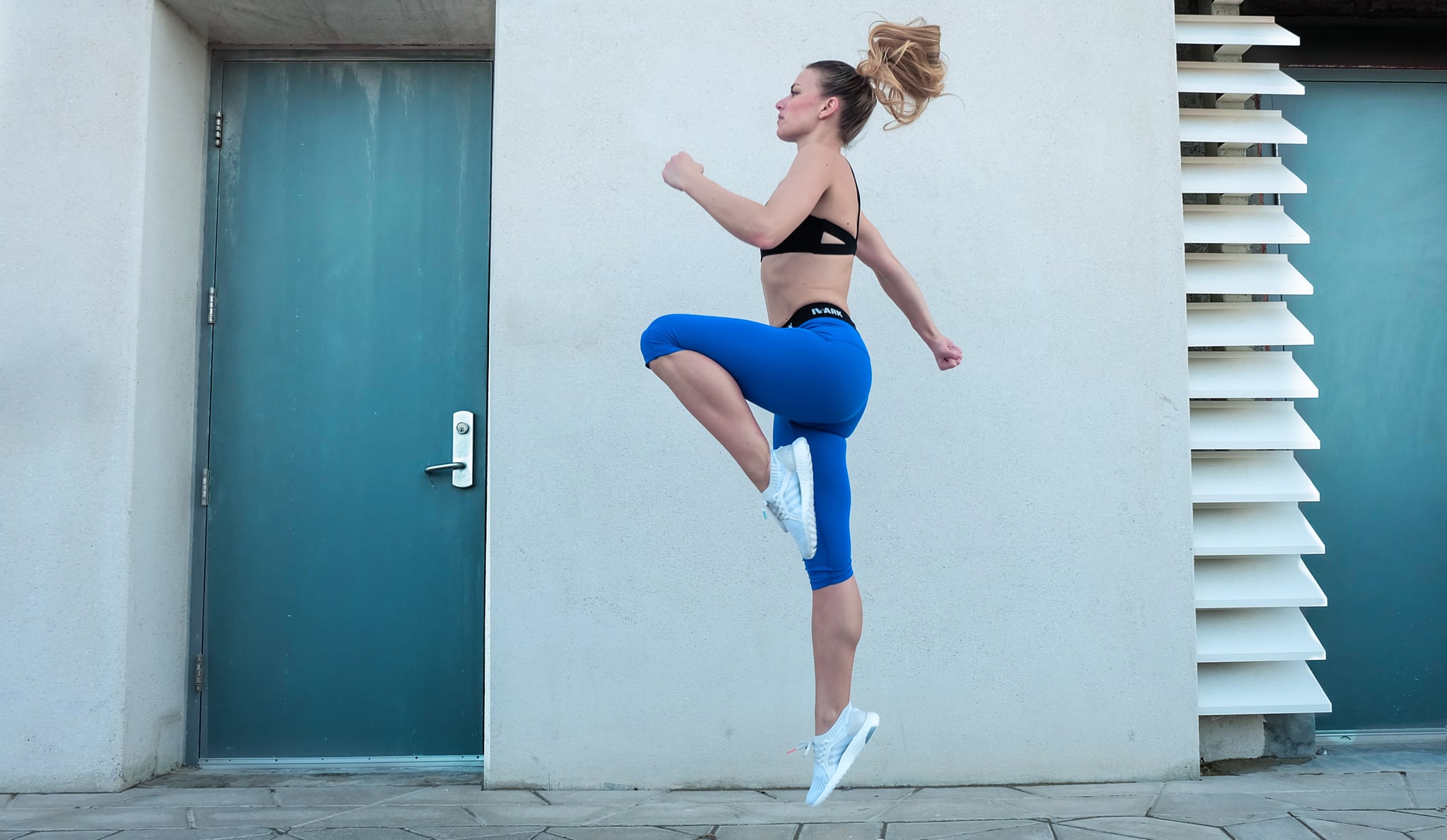
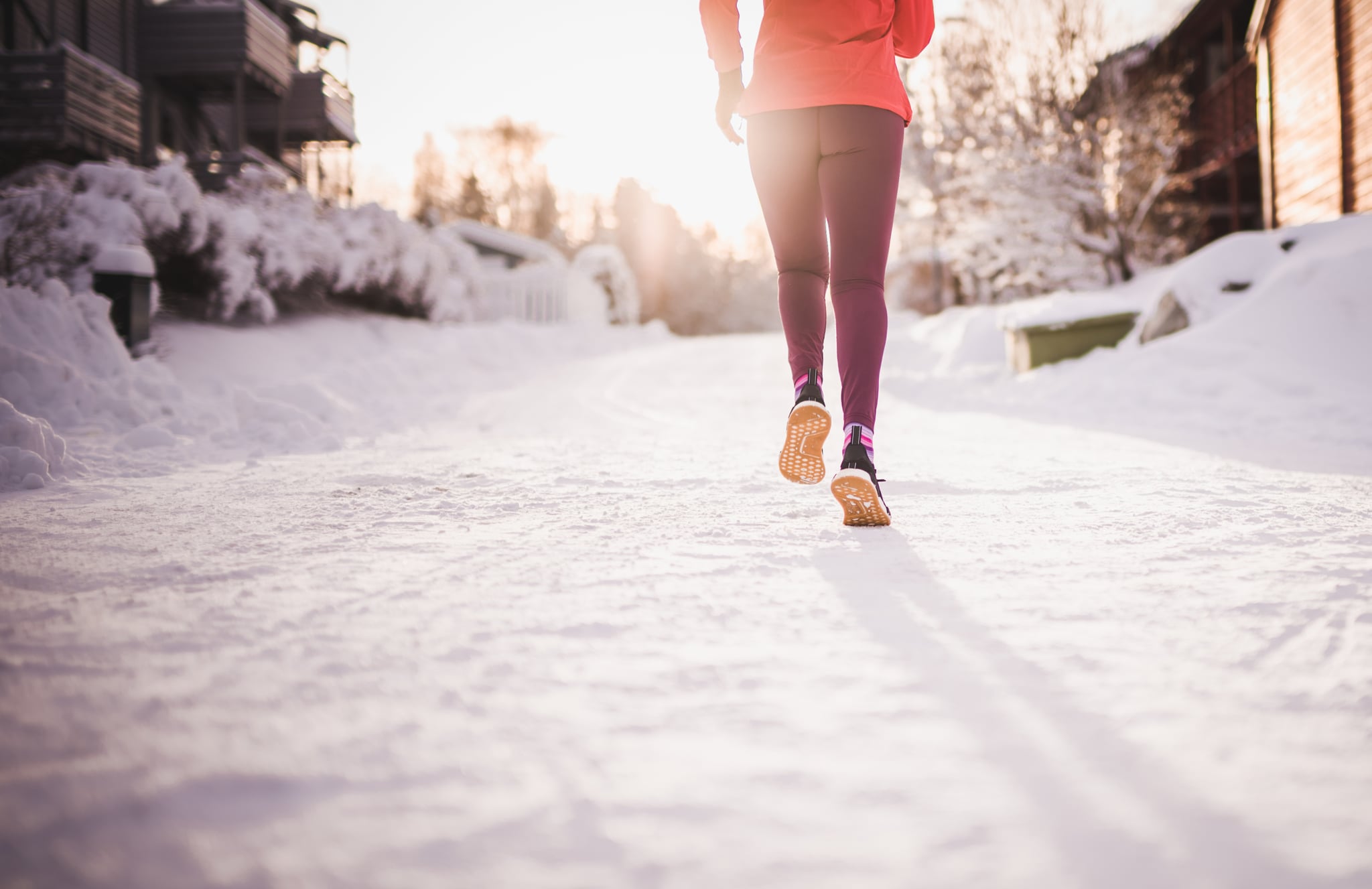





 RSS Feed
RSS Feed
